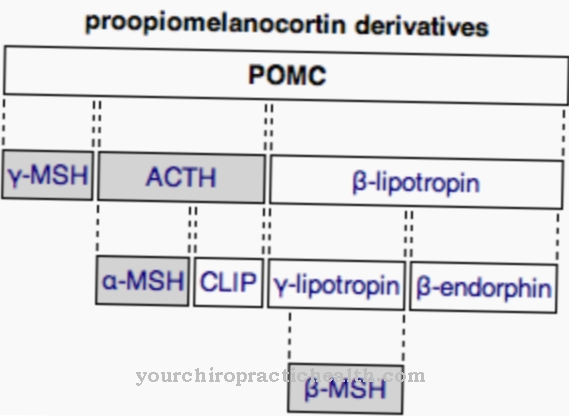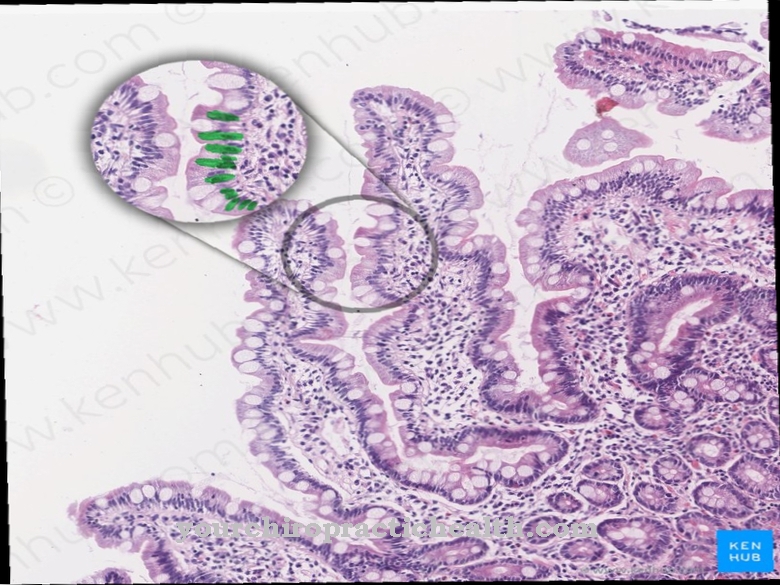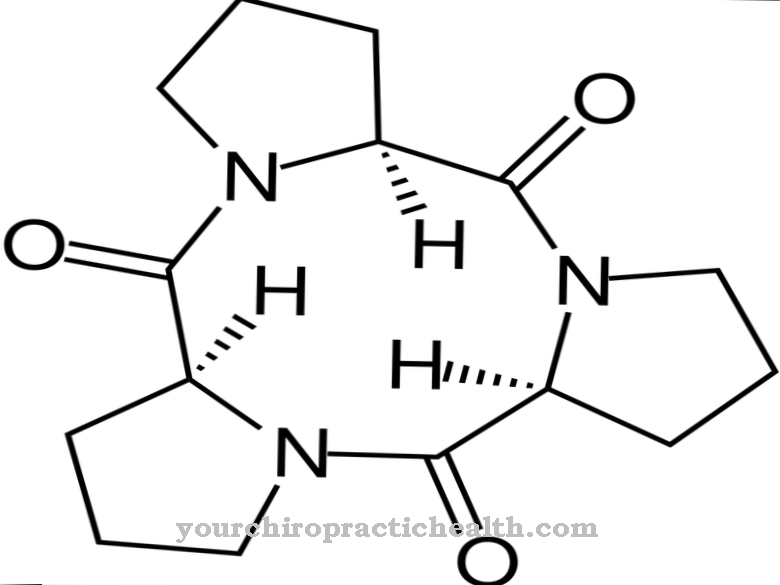gluten is a mixture of different proteins. As an adhesive protein, it occurs mainly in grain. People who suffer from [gluten intolerance]] (celiac disease) experience digestive problems of varying severity when they consume these foods.
What is gluten
Gluten is a mixture of different proteins. Colloquially it is also known as gluten: gluten is responsible for the fact that flour mixed with liquid takes on a sticky consistency.
The dough of bread or other pastries has a cohesion due to the protein mixture and forms a homogeneous mass. The change in consistency is due to the fact that the proteins in the dough take on a three-dimensional structure. This is not reversible (irreversible). Gluten is an adhesive protein, but not a glue. In contrast to gluten, glues consist not only of proteins, but also of proteins, fats and carbohydrates.
Function, effect & tasks
Gluten in its entirety has no significance for health or the human body. The only exceptions are gluten intolerance or celiac disease. However, gluten is made up of different proteins. The proteins consist of long chains of amino acids. The splitting of the proteins releases energy that the body can use for its metabolic processes. At the end of this processing, the amino acids are either free or divided into shorter chains.
The body needs the amino acids as building blocks for further molecules, which serve as starting materials for all cells, hormones, transmitters, types of tissue etc. There are a total of 23 known proteinogenic amino acids, from which an almost infinite number of proteins can be composed. Of these amino acids, eight are essential for humans, that is, they are vital. They include isoleucine, leucine, lysine, methionine, phenylalanine, threonine, tryptophan, and valine. In addition, the organism needs semi-essential amino acids: In the event of an injury, for example, certain amino acids are required to help the body cope with this injury. If there is no injury, they are not so important to the functioning of the human body.
The number and sequence of the amino acids as well as the spatial structure of the folded chain determine the properties of the proteins - comparable to letters that line up to form words. In addition to the proteinogenic amino acids, there are numerous other amino acids that are not used as building materials in proteins. Biology calls them non-proteinogenic amino acids. For example, they influence the enzymatic reaction. To date, researchers have identified around 400 different non-proteinogenic amino acids.
Education, occurrence, properties & optimal values
Gluten is found in various types of grain, but not all. With 10.3 g of gluten per 100 g of flour, spelled has one of the highest proportions of gluten. Oats, on the other hand, have about 5.6 g of gluten per 100 g of flour. The gluten in wheat forms the basis for the so-called wheat meat, the seitan. It is an increasingly popular alternative to meat and, like this, is very high in protein. Gluten-free grains include millet, corn, rice, and teff.
Teff or dwarf millet is a sweet grass that occurs mainly in Ethiopia and is very widespread there. In addition to these types of grain, buckwheat, amaranth and quinoa are also gluten-free. Biologically speaking, however, they are not cereals; botany therefore also calls them pseudograins.
The two components of gluten are prolamin and gluteline. Prolamines do not serve as building materials and are not enzymes either: They are storage proteins that the plant forms in the seeds. These proteins are available to the new plant during germination. That is why biology also calls them reserve substances. Prolamins are not single-origin proteins, but are also composed of various proteins.
Diseases & Disorders
Gluten intolerance is a common gluten disorder. Medicine also calls it celiac disease or gluten-sensitive or gluten-induced enteropathy. This disease is a cross between an allergy and an autoimmune disease. It is clearly different from the wheat allergy, which, however, can show similar symptoms.
People who cannot tolerate gluten are overly sensitive to the building blocks of gluten. As a result, chronic inflammation of the intestinal mucosa is manifested. Without dietary measures, it leads in many cases to the destruction of the epithelial cells in the intestine. As a result, the body can no longer properly absorb nutrients. Digestion remains incomplete.
This disorder triggers various symptoms. Digestive complaints such as diarrhea, but also vomiting, loss of appetite, weight loss, depressive symptoms, fatigue and concentration problems are characteristic. Celiac disease can also impair physical development in children. Affected children develop physiologically more slowly than healthy peers. Medicine calls this disease pattern failure to thrive. The extent of the symptoms depends on how severe the gluten intolerance is in the individual case. Some sufferers experience only slight digestive problems, while others have to accept severe functional losses.
Gluten intolerance can be hereditary. People with celiac disease will have symptoms for life when they eat gluten; there is no cure. However, those affected can control the disease by changing their diet and avoiding foods containing gluten. Not only do you have to stop eating cereals containing gluten, you may also need to consider contamination in other foods. People with uncontrolled celiac disease are at increased risk of certain cancers and diabetes.




.jpg)



.jpg)



















